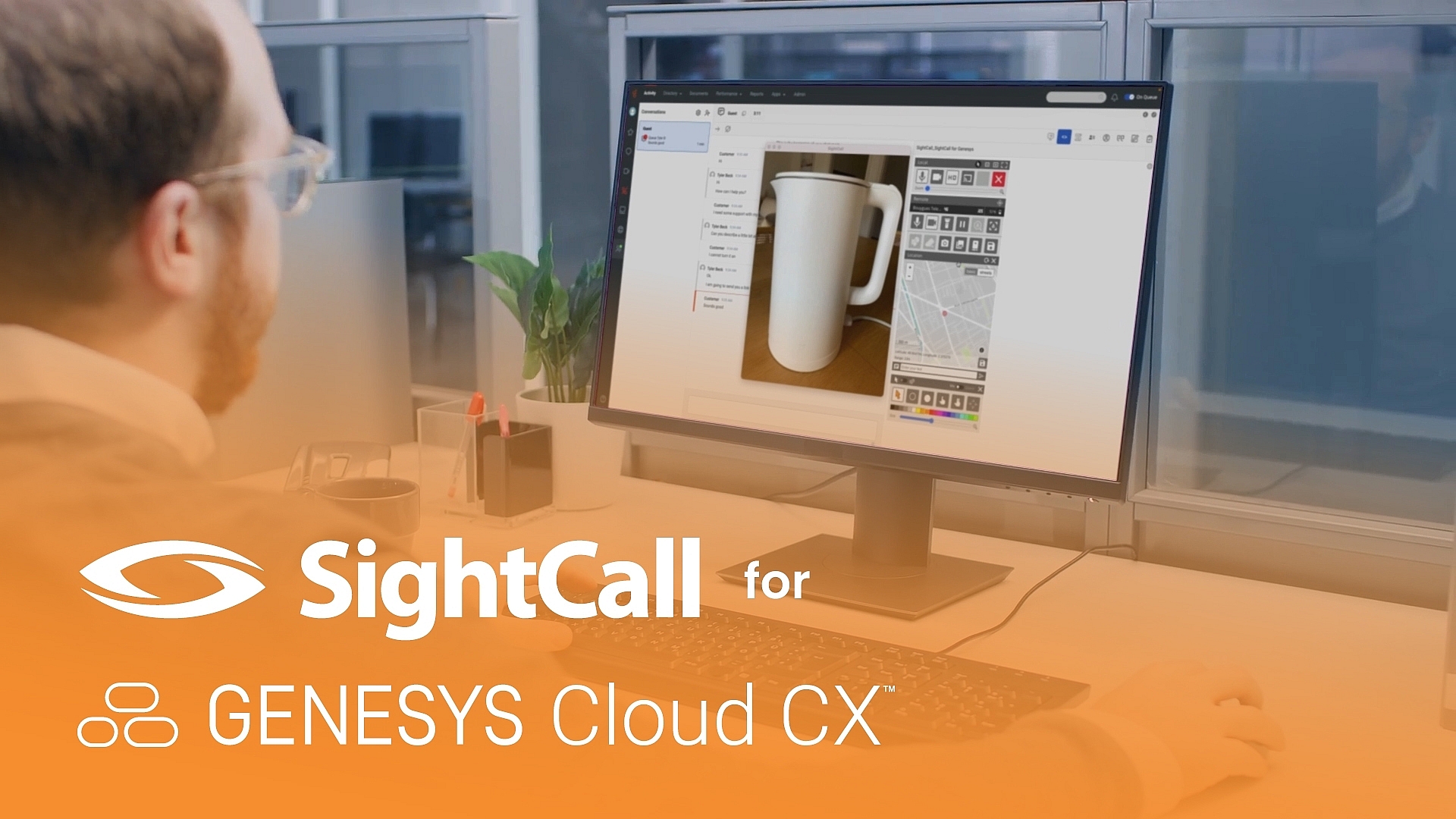A contact center, often referred to as a “call center,” is one of the most central components of a service organization. The day-to-day task of fielding inquiries, troubleshooting and building solutions to issues in the moment plays a significant role in the relationship your company and its brand builds with customers. This, in turn, forms what is perhaps the leading element of quality control.
Call centers typically deal with metrics like first-time issue resolution and average time to repairs, both of which help a company determine how effective its agents and systems are at giving customers what they need the first time around, without the need for duplicate questions or multiple site visits.
Less-than-ideal service encounters, particularly in sectors like insurance or utilities, where someone is reaching out during a stressful situation, carry a high risk of that customer walking away from a company or provider, never to return.
This, combined with increasingly stringent and demanding expectations from auditors and regulators, are leading companies in numerous sectors to explore how digitization can maximize the effectiveness of their contact centers and the key performance indicators within them. This article explores the role of visual assistance – a technology combining live video communications, augmented reality, artificial intelligence, and digital process automation – in achieving contact center optimization.
What does a contact center do?
The contact center is a centralized hub to receive, manage and respond to customer inquiries and to perform troubleshooting. The agents who work there often act as the customer’s first or second meaningful interaction with the organization.
Contact centers are categorically split between business to business (B2B), business to customer (B2C), and internal help desk models. In general, all are powered by customer relationship management (CRM) platforms, which include Salesforce, Zendesk, or Genesys – all of which are integrated with our own platform at SightCall.
A B2B contact center focuses on improving and maximizing client experiences. The use of a technical helpdesk, for example, can provide assistance on even the most challenging repairs, narrowing a company’s call-out rate and increasing response times. A B2C contact center focuses more on customer experiences, such as reducing the number of product returns, getting tasks done the first time, and bolstering customer satisfaction and retention.
The evolution of customer service
The concept of customer service has existed one way or another since the first Industrial Revolution. But needless to say, things have changed dramatically in the succeeding centuries. The economic and supply chain impact of events like two world wars, several recessions and a depression, and global health emergencies like COVID-19 – not to mention technologies developed both within and alongside them all – have reshaped it.
Customers today demand high-quality service and want to take advantage of the latest technology to solve problems in times and places that are convenient to them. If they have problems, they want them solved immediately – not in hours or days, let alone longer. In practice, this looks like not having to wait for a technician to be dispatched to their houses or businesses to troubleshoot or fix a piece of equipment. This is especially true in the business-to-customer (B2C) model, where customers frequently need to take time away from their jobs to wait for a technician to stop by their home.
When a company decides it wants to not simply tweak, but rather transform the way its contact centers handle requests and dispatches, this is referred to as contact center optimization.
What is contact center optimization?
Optimizing your contact center involves realizing the highest caliber of customer service, at the lowest possible cost for the organization. Because everyone’s target KPIs will be slightly different based on where they are, the respective goals for improvement will be different. But a few qualifiers are consistent with successful optimization:
-
- Faster call resolution rates
-
- Less time spent per customer
-
- A higher number of customers served per day
-
- Lowering customer service costs internally
-
- Increased customer satisfaction levels
-
- Increasing sales if the contact center upsells
-
- Faster agent training
-
- Improved agent retention and job satisfaction
The goal, put more simply, is to maximize what the agents see and the number of cases they can handle, while also delivering a more rapid, personalized service to the customer themselves. With the right preparation, augmented reality-powered visual assistance is the most suitable solution to help enterprises do this.
How can AR-powered visual assistance help with contact center optimization?
By using visual assistance technology, an enterprise can ensure that its agents see what their customers see in real-time. It is a much more immersive way for the agent and customer to connect, and mutually troubleshoot or resolve an issue.
While any video platform could be used in theory to complete a visual assistance session, platforms enhanced by the latest technologies make the experience even more powerful and transformative for customers. Augmented reality (AR) is one such tool. AR is the enhancement of an interactive, virtual component onto a real-world environment or situation, layering tools like informational text and 3D graphics on top of a user’s field of vision.
With the use of AR, an agent can solve customer issues faster by seeing what the customer sees, versus needing to dispatch a technician to a customer’s home or business, entailing more time and resources.
The SightCall platform integrates seamlessly within contact center workflows and works in harmony with existing systems and processes to maximize the service department’s impact. The result is greatly improved first-time resolution rates, the ability to serve more customers per day, and a lessened need for in-person travel to triage a problem or fix a broken or non-functioning piece of equipment. Specifically, our internal data shows the use of augmented reality is capable of achieving:
-
- An 81% growth in first-time fix rates.
-
- A 69% reduction in time to issue resolution, and a 50% reduction in truck rolls.
-
- Knowledge savings through a 41% decrease in training time.
-
- Customer satisfaction increases by as high as 30 points.
And SightCall visual assistance can help a few more areas of a service business.

Performing pre-visit triage and assessments
Even in the event that a technician does need to be dispatched to tackle a particularly complex issue, the company can still remotely assess a customer issue to determine what tools and expertise are needed for a successful first time fix.
Enabling self-guided installations
For customers who want to perform certain tasks themselves while still being closely guided by instructions, augmented reality and artificial intelligence guidance can empower a customer to install their own devices or perform simple troubleshooting.
How can digital process automation help with contact center optimization?
The definition of digital process automation (DPA) is the use of technology to optimize workflows by automating processes within them. Because those processes are more standardized, this results in improved enterprise performance and reduces errors that traditionally prevent businesses from achieving their best results.
Digital process automation is straightforward, both in implementation and use, especially for the customers. DPA is ideal for building self-guided experiences or journeys for customers that give them the ability to solve their own problems and engage in their own service activities, such as registering warranties. The business can then collect data from customers that allows them to improve service encounters with successive customers.
SightCall’s own Digital Flows solution allows tasks to be completed with no ambiguity or confusion. This saves contact center agents a tremendous amount of time by having customers use their smartphones to enter basic information like their name, address, phone, and serial numbers. With this in place, an agent can focus on immediately helping the customer, instead of doing basic data entry, making the customer repeat their stories, or asking repetitive questions.
Digital Flows also ensures contact center agents complete all the required procedures in the correct order, and have their work automatically documented and saved in their CRM. This is especially crucial to stay compliant with regulations and avoid fines for even simple mistakes.
Case Study: How iFIT realized a more efficient and responsive contact center
The mission of iFIT Health and Fitness is to empower a more active, balanced lifestyle for all. iFIT owns established industry-leading fitness brands NordicTrack, ProForm, and Freemotion, which offer connected fitness membership services powered by iFIT, an immersive live and on-demand streaming fitness and wellness media platform with more than 700,00 paid subscribers.
As early as 2017, iFIT recognized the power of remote visual assistance (read iFit case study) to increase satisfaction for their customer service agents and improve the customer experience. By partnering with SightCall, iFIT was able to streamline the process for repairs and troubleshooting for in-home equipment with a visual assistance solution that integrates with their CSM system and empowers their agents to help customers get the most out of their home fitness equipment.
iFIT quickly deployed SightCall for Salesforce to all contact center agents, eliminating the need for long phone calls to try and understand a problem. Agents can initiate a SightCall session directly from Salesforce via text or email link with a customer to immediately see and discuss the issue.
Photos and videos are saved directly to the Salesforce platform, speeding up the approval process for replacement parts or repairs for equipment under warranty. Using visual assistance has improved both agent and customer satisfaction, increased first-time fix rates, and reduced the number of incorrect parts ordered and shipped.
Now, average resolution time has decreased significantly for all 800 agents, saving up to 4,000 hours per week. Agents with the highest usage of SightCall place the least amount of service technician requests – resolving 95% of their cases without the need to schedule an in-person visit.
This dramatically increased efficiency has allowed iFIT to scale its customer help center adding hundreds of new agents. In addition, over 85% of customers surveyed said they liked their experiences with live visual assistance support.
With lower training time also having resulted, new agents are able to onboard quickly, gaining familiarity with different brands and models by seeing them firsthand during their interactive video sessions with customers. Agents also have access to knowledge articles and resources that can then be shared with the customer with one click.
In the event a technician visit is required, first-time fix rates are vastly improved by visual assistance. And correctly identifying the problem and the parts needed through a SightCall session reduces the need for multiple visits.
Abundant and useful data has also been supplied to the iFIT quality engineering team. All photos and video from a SightCall session are saved into the CRM, meaning that recurring problems can be identified easily without wading through notes and call logs. With a simple search, quality engineering teams can access all reported problems with a particular piece of equipment or component. They share these comprehensive reports with manufacturers and research and development teams to guide improvements that benefit all future customers.
A stronger contact center is your key to success and customer loyalty
There is a direct relationship between call center performance and your bottom line, unsurprising when you consider that this is often the most consequential interaction a prospective customer – or a stressed, existing one – will have with you.
Research from our partner Genesys’ State of Customer Experience suggests as high as 54% of consumers value first contact resolution in customer service interactions. NewVoice Media reports that 56% of customers will never use a company again after experiencing poor service. As a result, there is a significant incentive to engage in process optimization in your B2B or B2C customer support department.
Smooth and seamless experiences are thereby more memorable, resulting in personal and business customers alike being more likely to turn to your service organization in stressful and uncertain situations.



